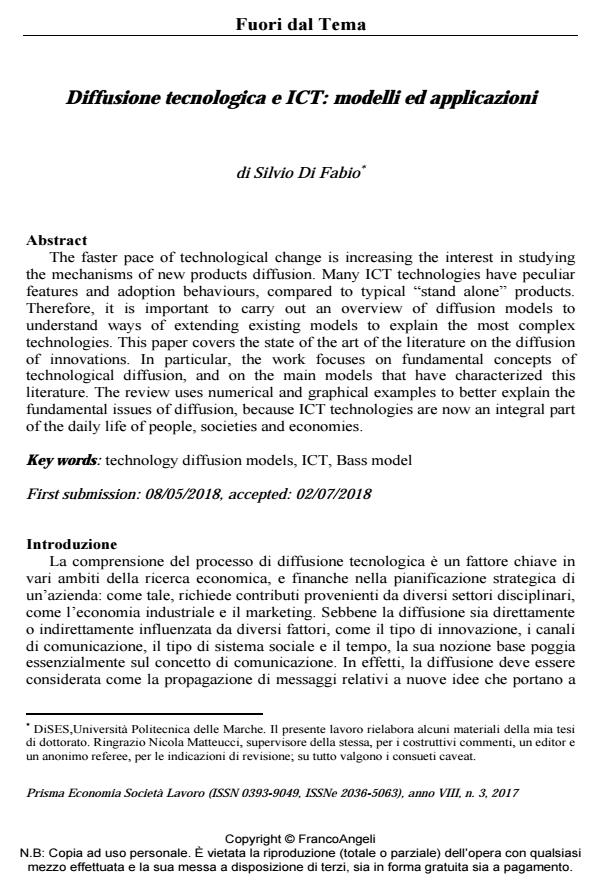Diffusione tecnologica e ICT: modelli ed applicazioni
Journal title PRISMA Economia - Società - Lavoro
Author/s Silvio Di Fabio
Publishing Year 2018 Issue 2017/3
Language Italian Pages 15 P. 92-106 File size 346 KB
DOI 10.3280/PRI2017-003009
DOI is like a bar code for intellectual property: to have more infomation
click here
Below, you can see the article first page
If you want to buy this article in PDF format, you can do it, following the instructions to buy download credits

FrancoAngeli is member of Publishers International Linking Association, Inc (PILA), a not-for-profit association which run the CrossRef service enabling links to and from online scholarly content.
The faster pace of technological change is increasing the interest in studying the mechanisms of new products diffusion. Many ICT technologies have peculiar features and adoption behaviours, compared to typical "stand alone" products. Therefore, it is important to carry out an overview of diffusion models to understand ways of extending existing models to explain the most complex technologies. This paper covers the state of the art of the literature on the diffusion of innovations. In particular, the work focuses on fundamental concepts of technological diffusion, and on the main models that have characterized this literature. The review uses numerical and graphical examples to better explain the fundamental issues of diffusion, because ICT technologies are now an integral part of the daily life of people, societies and economies.
Keywords: Technology diffusion models, ICT, Bass model
Silvio Di Fabio, Diffusione tecnologica e ICT: modelli ed applicazioni in "PRISMA Economia - Società - Lavoro" 3/2017, pp 92-106, DOI: 10.3280/PRI2017-003009